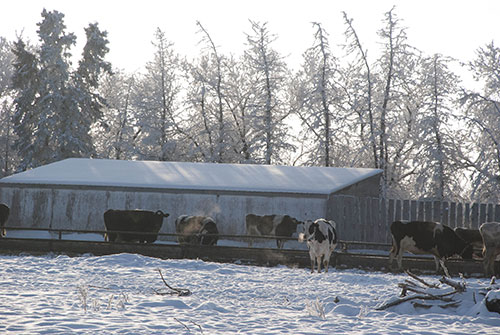
If your bulk tank took a hit during the frigid weather, you were not alone. University of Illinois' Mike Hutjens conducted an informal survey of dairy producers at meetings in Illinois and Minnesota during the latest cold spell. Most reported a drop of 2 to 4 pounds of milk per cow per day; some were down more than 5 pounds per cow. Most of these cows should return to normal production, he explained, but those in late lactation may not rebound to previous levels.
When temperatures fall below 15°F, cows must consume 2 to 3 more pounds of dry matter to generate the energy needed to meet maintenance requirements. If cows do not consume enough extra dry matter, milk output will most likely decline.
The farms reported that, in the coldest weather, cows were reluctant to leave the freestalls and go to the feedbunk, especially if the bunk was outdoors and exposed to wind. If uninviting feedbunks cause cows to consume less dry matter than normal, even higher milk losses could be expected.
Another challenge the farmers mentioned was ice in the feed, but unpublished University of Illinois' work showed that, when ice was added to the rumen of a fistulated cow, it took just 10 minutes to return to normal temperatures. If cows don't find feed palatable because of ice, however, dry matter intake is likely to suffer, resulting in less energy for milk production.
To up the energy density of the ration, Hutjens suggests adding 2 or 3 pounds of corn or barley. If dry matter consumption goes down, or the ration is already on the upper limit for energy and starch, use with caution, he said, as additional grain could lead to rumen challenges. Fat might be a good energy option as well, depending on cost and availability.








